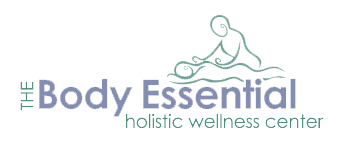Pre-Natal Pregnancy Massage – Nurturing Mother and Child
 One of the oldest and most honored traditions in the health care world is that of the pregnancy. Nine months of planning and preparation waiting in anticipation for the new life to emerge. With all the excitement and anticipation, also come some inevitable side effects. With all the hormonal changes that lead to mood swings, crying one moment and laughing the next. Later in the pregnancy there are physical discomforts as well; such as back pain, nausea, heartburn, raging hormones, breast pain, swollen legs and ankles.
One of the oldest and most honored traditions in the health care world is that of the pregnancy. Nine months of planning and preparation waiting in anticipation for the new life to emerge. With all the excitement and anticipation, also come some inevitable side effects. With all the hormonal changes that lead to mood swings, crying one moment and laughing the next. Later in the pregnancy there are physical discomforts as well; such as back pain, nausea, heartburn, raging hormones, breast pain, swollen legs and ankles.
Women no longer have to “suffer in silence”. Pregnancy massage is non-invasive and gentle, allowing for the easing of discomforts, preparing you for labor and offering emotional support of the practitioner. You can relax with a true sense of calm and reconnect to yourself through all the changes in your body.
Massage has been proven scientifically to provide many health benefits such as stimulation of the circulatory and lymph systems, increasing the removal of toxins and enhancing the immune system. It also helps to stabilize the hormone levels and add tone and flexibility to the muscles. As the pregnancy progresses, your body adjusts to the growing baby by changing and adjusting its alignment which can lead to an increased strain on your back and legs and increasing the stress on weight-bearing joints. Massage increases flexibility, enhancing the ability to carry this extra weight while also relieving aches and pains, leg cramps and muscle spasms. The effects of relaxation and tension release add to improvement in the physical state of muscles and joints, and assist in balancing emotions. Recent studies from the Touch Research Institute in Miami Florida, indicates that pregnancy massage provides more than just symptom relief for the mother.
 A group of 26 pregnant women were given either massage or relaxation therapy during a five-week study. In addition to experiencing a reduction in symptoms of anxiety, stress, sleep problems and back pain, the massage group had fewer complications in their delivery. Their newborns also had fewer postnatal complications. Another TRI study reported massage during labor resulted in shorter labor times for the mothers, shorter hospital stays and less postpartum depression.
A group of 26 pregnant women were given either massage or relaxation therapy during a five-week study. In addition to experiencing a reduction in symptoms of anxiety, stress, sleep problems and back pain, the massage group had fewer complications in their delivery. Their newborns also had fewer postnatal complications. Another TRI study reported massage during labor resulted in shorter labor times for the mothers, shorter hospital stays and less postpartum depression.
- During the first trimester of pregnancy, a primary goal of massage is to provide relaxation and increase flow of the circulatory system. Stimulating the blood system pumps more energy-giving oxygen and nutrients into your cells and increases blood flow to the placenta. Muscle tension can slow down lymph flow, leaving you fatigued and at risk of toxemia. By stimulating this system, massage speeds up elimination of toxins and excess fluid, boosting your immunity and energy level. While bodywork won’t completely relieve nausea (morning sickness), it can certainly diminish the queasiness.
- In the second trimester, increasing weight of the baby can cause muscle soreness. Massage is used to release muscle spasms and ease structural changes. The therapist works to loosen joints, keeping them aligned and softening the connective tissues, relieving backaches and leg cramps. As pregnancy progresses and the abdomen enlarges, special positioning is required during massage. Pressure on the arteries in the back will diminish blood flow and oxygen to the fetus. Lying on the back with the right hip tilted up on a pillow, takes pressure off the nerves and arteries. Another position that decreases stress on the back is side-lying, with the belly supported by a pillow.
- During the final trimester, the baby begins to gain weight more rapidly, pressing against inner organs and causing them to shift. Discomfort increases and the impending due date can cause added stress and anxiety. At this stage, the therapist focuses on specific points to relieve pain while continuing to elicit relaxation throughout the body. Before initiating massage, consult your obstetrician, especially if you are high-risk.
While massage is a safe treatment, there are certain conditions that require your physician’s approval and careful monitoring by the therapist. Notify your therapist immediately of any changes in your physical health, and consult your obstetrician about continuing the treatments should complications arise. Some physicians may be unaware of the benefits of pregnancy massage and hesitate to recommend it. In these cases, the therapist can help by providing information that explains her specialized training and experience.
Tips for Improving Your Family's Eating Habits
With today’s busy lifestyles, families don’t always eat as healthfully as we would like. But by practicing healthy eating habits at home, you can make it easier for your family to eat right. Try these 10 tips designed to encourage healthy eating habits:
- Be a good food role model. Telling children to eat nutritious foods is one thing — showing them is better. If you offer nutritious foods regularly — and if they see you eating them — your children likely will learn to like them.
- Serve a variety of fruits and vegetables daily. In addition to bananas and apples, try something new like kiwi or papaya. Add vegetables to stir fries or casseroles.
- Schedule a snack time and stick to it. Space snacks at least two to three hours before a meal.
- Involve kids in meal planning and preparation. Children often will eat foods they help plan and prepare. At the same time, your child can learn how to handle and prepare foods in a safe, healthful way.
- Keep less-healthful foods on a higher shelf where they won’t be noticed as much.
- Eat as a family. If possible eat together at least once a day. If it’s breakfast, set the table the night before for less effort in the morning.
- Don’t eat in front of the TV. Have your family eat around a table, not side by side at the counter.
- Encourage your family to try new foods. Trying new foods expands your food knowledge, experience and skills. Kids will like some, but not all of these foods. That’s OK.
- Let kids stop eating when they say they’re full. Encourage your child to eat slowly and pay attention to feeling full. By learning hunger and fullness cues, your child will learn to eat enough, but not overeat.
- Enjoy your food. Avoid fussing, nagging, arguing or complaining at the table. A stress-free meal that is neither rushed nor prolonged promotes family bonding and helps everyone enjoy what they’re eating.

 One of the oldest and most honored traditions in the health care world is that of the pregnancy. Nine months of planning and preparation waiting in anticipation for the new life to emerge. With all the excitement and anticipation, also come some inevitable side effects. With all the hormonal changes that lead to mood swings, crying one moment and laughing the next. Later in the pregnancy there are physical discomforts as well; such as back pain, nausea, heartburn, raging hormones, breast pain, swollen legs and ankles.
One of the oldest and most honored traditions in the health care world is that of the pregnancy. Nine months of planning and preparation waiting in anticipation for the new life to emerge. With all the excitement and anticipation, also come some inevitable side effects. With all the hormonal changes that lead to mood swings, crying one moment and laughing the next. Later in the pregnancy there are physical discomforts as well; such as back pain, nausea, heartburn, raging hormones, breast pain, swollen legs and ankles. A group of 26 pregnant women were given either massage or relaxation therapy during a five-week study. In addition to experiencing a reduction in symptoms of anxiety, stress, sleep problems and back pain, the massage group had fewer complications in their delivery. Their newborns also had fewer postnatal complications. Another TRI study reported massage during labor resulted in shorter labor times for the mothers, shorter hospital stays and less postpartum depression.
A group of 26 pregnant women were given either massage or relaxation therapy during a five-week study. In addition to experiencing a reduction in symptoms of anxiety, stress, sleep problems and back pain, the massage group had fewer complications in their delivery. Their newborns also had fewer postnatal complications. Another TRI study reported massage during labor resulted in shorter labor times for the mothers, shorter hospital stays and less postpartum depression.